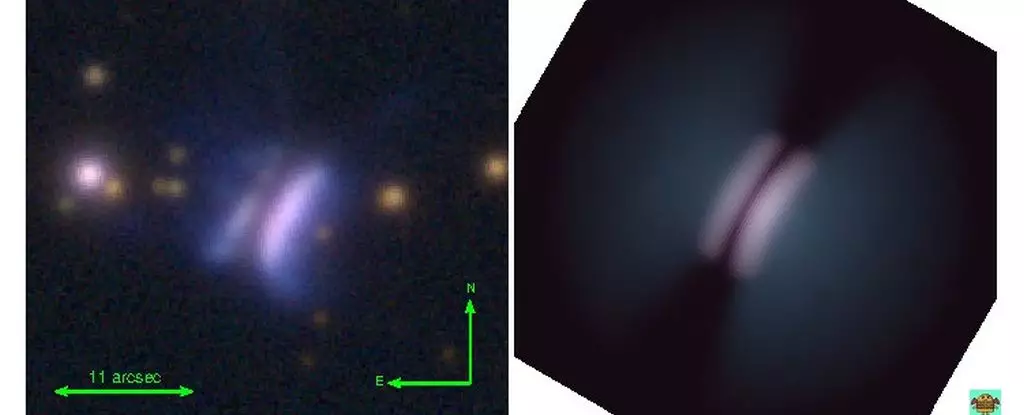The vast expanse of space is not just filled with stars and galaxies; it also seems to be teeming with delicious cosmic snacks. Recently, a team of astronomers led by Ciprian Berghea from the US Naval Observatory discovered a fascinating object in the Milky Way, which they fondly named Dracula’s Chivito after the iconic meat-laden sandwich from Uruguay. This object, however, is not an actual sandwich but a baby star enveloped by a dense disk of gas and dust, which, when viewed edge-on, bears a striking resemblance to a sandwich. The astronomical community has a history of giving such objects intriguing food-related names, like Gomez’s Hamburger, a similar-shaped object discovered in 1985. While Dracula’s Chivito and Gomez’s Hamburger share many similarities, such as their distance from Earth and their orientation, they both defy conventional expectations for the birth of new stars. These peculiar objects might represent a class of newborn stars that have yet to be fully understood.
Typically, baby stars are born in stellar nurseries, rich environments abundant in materials that foster the formation of new stars. However, both Dracula’s Chivito and Gomez’s Hamburger appear to be floating in relatively empty space, devoid of any nearby star-forming regions or clusters. This perplexing characteristic raises questions about how these stars came to be born and challenges our existing understanding of the stellar birth process.
To gain insights into the enigmatic Dracula’s Chivito, Berghea and his team studied the object extensively. They determined that the central star is most likely a hot, Herbig Ae-type star, with temperatures reaching around 8,000 Kelvin (7,727 degrees Celsius or 13,940 degrees Fahrenheit). The disk surrounding the star extends a staggering 1,650 astronomical units in radius (1,650 times the distance between the Earth and the Sun) and contains approximately 0.2 times the mass of the Sun. These properties closely resemble those of Gomez’s Hamburger, but Dracula’s Chivito possesses an intriguing feature—an additional pair of protruding filaments, resembling fangs, emerging from the “buns” of the sandwich-shaped star. Through modeling the stellar formation process, the researchers suggested that these filaments indicate the presence of a dissipating envelope around the star. This fading bubble of material offers valuable insights into the star’s developmental stage. Baby stars emit powerful winds and jets that blow away excess material surrounding them, and the presence of the thin envelope implies that Dracula’s Chivito is still in its early stages of formation.
The discovery of Dracula’s Chivito provides scientists with a unique opportunity to study the vertical structure of the star formation process. By closely examining this isolated baby star, researchers hope to unravel the processes that led to its solitary existence. Although these objects might be rare, they could serve as keys to unlocking the mysteries of isolated star formation in the vast darkness of space.
The existence of Dracula’s Chivito and its fascinating characteristics raise countless questions. How did these isolated stars come into being? Are there more celestial sandwiches waiting to be discovered? The quest for answers continues. Scientists are eager to find other similar objects to further investigate and gain a deeper understanding of these captivating cosmic snacks. Only by unraveling their mysteries can we hope to grasp the complexities of star formation in the universe. Until then, the tantalizing allure of Dracula’s Chivito and its cosmic companions beckons us to explore the wonders and possibilities that lie beyond our own planet.


Leave a Reply